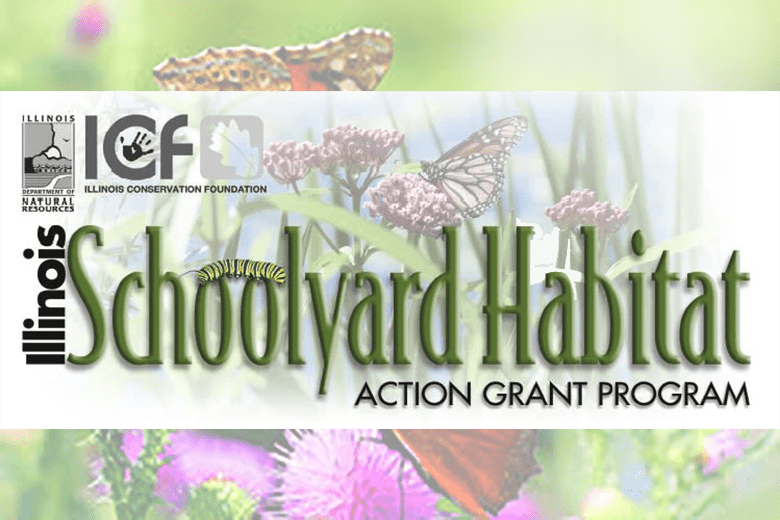
Illinois — The deadline of Tuesday, Nov. 30, 2021 is approaching for the Illinois Schoolyard Habitat Action Grant. Schoolyard Wildlife Habitat Action Grant applicants must use native Illinois plants in their wildlife habitat area. If you are unsure of which plants are native to the state and where to purchase them, you can find information on the IDNR and other Web sites and through publications offered by the IDNR and other agencies.
How to Plant and Maintain Native Plants
Native Habitat Descriptions, Requirements and Plant Lists Web pages
For Your Garden
Native Habitat Descriptions, Requirements and Plant Lists Web pages
For Your Garden
IDNR Publications – many publications are available including
-
Illinois Wetlands
-
posters: Habitats are Homes; Illinois Prairie Wildflowers; Illinois Trees; Illinois Trees, Volume II; Illinois Fall Colors
Illinois Natural History Survey Publications
Schoolyard Habitat Project Guide
National Wildlife Federation Schoolyard Habitats® Planning Guide
The IDNR Division of Education was fortunate to be able to provide funding to teachers and youth group leaders from 2012 through 2014 through an Environmental Education Grant received from the U.S. Environmental Protection Agency. The Illinois Student/Youth Wildlife Habitat Action Grant program provided educators (grades prekindergarten through 12) with funds for their students to develop and enhance wildlife habitat on the school grounds and other public places. Through a competitive application process, 54 projects were awarded grants of up to $1,000.00 each. A total of 9,773 students were involved in the program. The wildlife habitat areas were designed to support educational learning standards and classroom lessons by taking students to life for learning. Examples of projects funded include butterfly gardens, prairie plots, rain gardens, outdoor classrooms, pollinator gardens, wetlands, bird nesting boxes and bat roosting boxes. Students were involved in design, implementation and maintenance of each project. This program helped promote awareness and knowledge of the environment and its components, presented opportunities for critical thinking, problem-solving and decision-making and involved the students in stewardship actions that will continue over the course of several years. The students were able to increase the amount of green space, reduce storm water runoff and improve children’s health in the local community.
-
Completed W-9 Form Required! Download the W-9 Form.
-
For Your Information. Here is the application review form used by the judges. This will show you how each question is rated and weighted. DO NOT include this sheet in your application package.
-
Follow progress of the Schoolyard Habitat Action Grant Demonstration Gardens
-
Listen to our Schoolyard Habitat Action Grant podcast for helpful hints (text version).